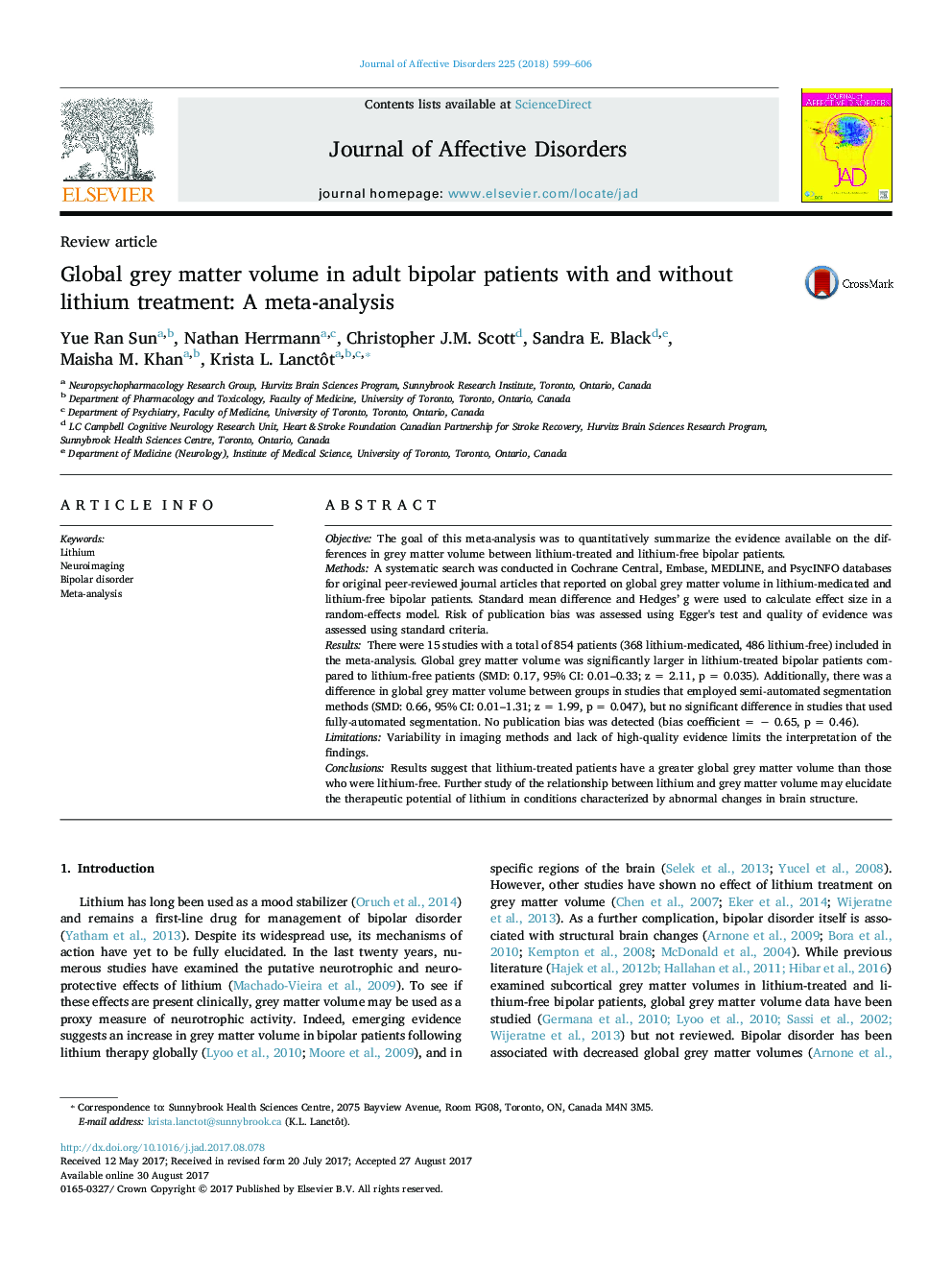| Article ID | Journal | Published Year | Pages | File Type |
|---|---|---|---|---|
| 5721765 | Journal of Affective Disorders | 2018 | 8 Pages |
â¢Global GMV was significantly larger in lithium-treated vs. lithium-free bipolar patients.â¢No significant differences in GMV between groups when stratified by mood state.â¢Difference in GMV between groups in studies that used semi-automated segmentation methods.
ObjectiveThe goal of this meta-analysis was to quantitatively summarize the evidence available on the differences in grey matter volume between lithium-treated and lithium-free bipolar patients.MethodsA systematic search was conducted in Cochrane Central, Embase, MEDLINE, and PsycINFO databases for original peer-reviewed journal articles that reported on global grey matter volume in lithium-medicated and lithium-free bipolar patients. Standard mean difference and Hedges' g were used to calculate effect size in a random-effects model. Risk of publication bias was assessed using Egger's test and quality of evidence was assessed using standard criteria.ResultsThere were 15 studies with a total of 854 patients (368 lithium-medicated, 486 lithium-free) included in the meta-analysis. Global grey matter volume was significantly larger in lithium-treated bipolar patients compared to lithium-free patients (SMD: 0.17, 95% CI: 0.01-0.33; z = 2.11, p = 0.035). Additionally, there was a difference in global grey matter volume between groups in studies that employed semi-automated segmentation methods (SMD: 0.66, 95% CI: 0.01-1.31; z = 1.99, p = 0.047), but no significant difference in studies that used fully-automated segmentation. No publication bias was detected (bias coefficient = â 0.65, p = 0.46).LimitationsVariability in imaging methods and lack of high-quality evidence limits the interpretation of the findings.ConclusionsResults suggest that lithium-treated patients have a greater global grey matter volume than those who were lithium-free. Further study of the relationship between lithium and grey matter volume may elucidate the therapeutic potential of lithium in conditions characterized by abnormal changes in brain structure.
